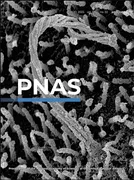What potential influence do age, gender and body mass index (BMI) have on aerosol emission during physical activity? This question has been investigated by the Associate Professorship of Exercise Biology headed by Prof. Dr. Henning Wackerhage together with the University of the Bundeswehr Munich (UniBW). The results of the study have now been published under the title "Lung aerosol particle emission increases with age at rest and during exercise" in the journal "PNAS". The journal has an impact factor of 12.779.
To increase the validity of the results, a cohort study was conducted in which respiratory ventilation, exhaled aerosol particle concentration and aerosol particle emission were measured continuously both at rest and during a graded exercise test until exhaustion.
"Here we use a top method to measure aerosol emission in humans that we have already tested and refined in previous studies," explains Prof. Wackerhage, "combining aerosol measurement by Prof. Dr. Christian Kähler from UniBW with our spiroergometry."
A total of 80 people took part, divided into four groups of 20 people each according to age group and gender. The research team found that subjects aged 60 to 76 emitted more than twice as many aerosol particles per minute as subjects aged 20 to 39, both at rest and during physical activity. In terms of volume, older participants emitted, on average, five times as much dry volume (i.e., remnants of dried aerosol particles) as younger participants.
"Based on this study, our main goal was to identify risk factors," said the head of the Associate Professorship of Exercise Biology. "We already knew that aerosol emissions increase 100-fold on average during physical exertion. Now, however, we were particularly interested in the influence of age, gender and BMI on the emission of aerosol particles. In that respect, it was quite surprising that age was the most important factor in our analyses." However, unlike age, there was no statistically significant influence of gender or BMI within the test group.
The results suggest that aging of the lungs and airways is associated with increased aerosol particle formation. For Prof. Wackerhage, this also has a significance for society: "Senior citizens are in principle more frequently affected by diseases such as influenza, rhinoviruses or also COVID-19. In this respect, the new findings are now also important for senior citizens' homes or also fitness sports for senior citizens. Moreover, since we are an aging society, our research has an even higher relevance."
To the publication "Lung aerosol particle emission increases with age at rest and during exercise“ in the journal “PNAS”
To the homepage of the Associate Professorship of Exercise Biology
Contact:
Prof. Dr. Henning Wackerhage
Associate Professorship of Exercise Biology
Connollystraße 32
80809 München
phone: 089 289 24480
e-mail: Henning.Wackerhage(at)tum.de
Text: Romy Schwaiger
Photos: "PNAS"/Andreas Heddergott/TUM

